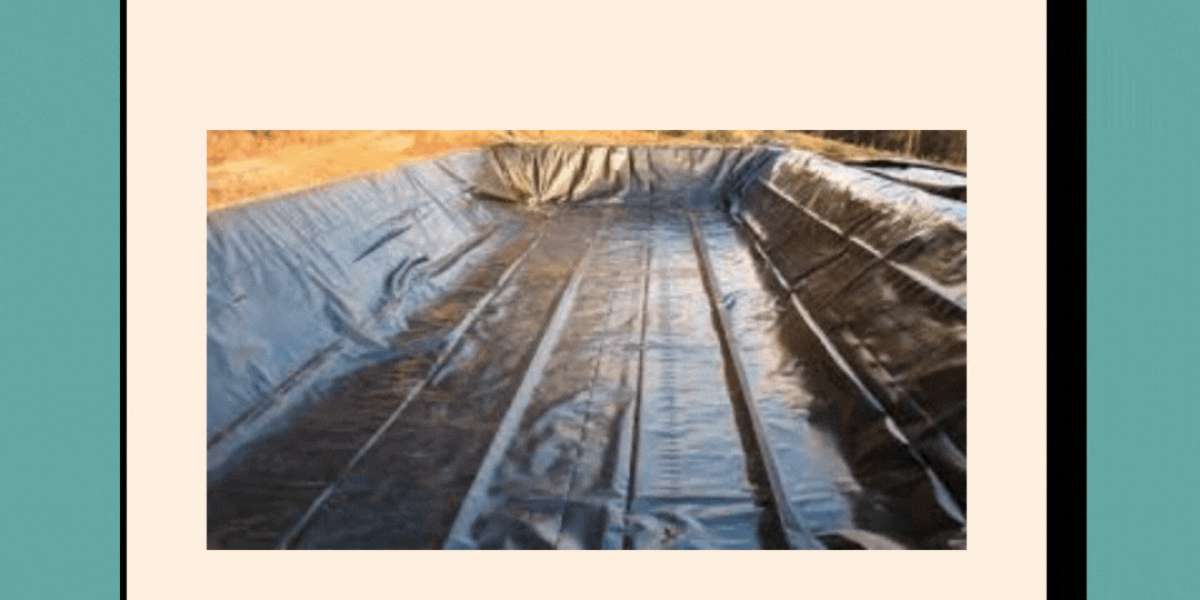In the world of pond management, achieving water quality and durability often relies on selecting the right lining materials. Reinforced Polyethylene (RPE) pond liners have emerged as an optimal choice for those aiming to maintain water clarity, prevent leaks, and promote an eco-friendly environment. With a growing demand for reliable pond liners, particularly in India, reinforced polyethylene pond liners are a favored solution among homeowners, landscape architects, and environmental managers alike.
Understanding the Advantages of RPE Pond Liners
Reinforced polyethylene pond liners, or RPE liners, offer a variety of benefits for pond construction and maintenance. Designed with a blend of polyethylene and additional materials that increase durability, RPE pond liners are resistant to punctures, UV rays, and temperature fluctuations. Unlike traditional liners, RPE pond liners provide a superior level of protection, effectively preventing leaks and minimizing the risk of contamination from surrounding soil. These properties are crucial for water bodies that require stable water quality, especially when used in ecosystems where aquatic life is present.
Why RPE Pond Liners Are Ideal for Water Quality Preservation
Water quality preservation is a primary concern for those managing ponds and water bodies, and RPE pond liners play an essential role in this aspect. The non-porous nature of reinforced polyethylene prevents contaminants, bacteria, and pollutants from infiltrating the water. This feature makes RPE liners particularly useful in sensitive environments where water clarity is paramount. In addition, the durability of RPE prevents liner degradation, which can lead to microplastic leaching—a risk associated with lesser-quality liners. By choosing RPE pond liners, pond managers and owners can be assured of long-term, consistent water quality.
The Eco-Friendly Benefits of Using RPE Pond Liners
As environmental awareness grows, more people are choosing eco-friendly options in every aspect of construction and management. RPE pond liners offer numerous environmental benefits. Reinforced polyethylene is a recyclable material, and its longevity reduces the need for frequent replacements. RPE liners also help in reducing water usage by minimizing evaporation, an essential factor in regions with limited water resources like certain parts of India. By using RPE pond liners, pond owners can create sustainable water storage systems that support environmental conservation.
Durability and Longevity of RPE Pond Liners
One of the standout features of reinforced polyethylene pond liners is their exceptional durability. The reinforced structure of RPE liners makes them resistant to tearing, puncturing, and general wear and tear, which can result from both environmental factors and wildlife. For instance, the tough construction of RPE pond liners can withstand the pressure exerted by rocks, roots, and sharp objects often found at the bottom or surrounding area of ponds. This durability ensures that pond owners can rely on RPE liners for years, making them a cost-effective option for long-term pond management.
Application of RPE Pond Liners in Various Water Bodies
RPE pond liners are incredibly versatile and can be used in a range of water bodies, from decorative backyard ponds to large agricultural reservoirs and industrial ponds. In India, where agricultural ponds and water storage systems are critical, RPE pond liner in India provide reliable solutions for storing water without the risk of seepage. The high tensile strength and flexibility of these liners allow them to adapt to various pond shapes and sizes, making them suitable for both large-scale commercial use and smaller personal ponds. This adaptability has contributed to the increasing popularity of RPE pond liners in diverse applications.
Why RPE Pond Liners Are Cost-Effective in the Long Run
While reinforced polyethylene pond liners may have a slightly higher upfront cost than some traditional liners, their long-term benefits make them a cost-effective choice. RPE liners require minimal maintenance and are less prone to damage, which significantly reduces replacement and repair costs over time. Moreover, their resistance to UV radiation and temperature extremes means that they retain their integrity longer, even under harsh environmental conditions. For pond owners looking to make a smart financial decision, RPE pond liners offer a balance of durability and low maintenance costs, making them a worthwhile investment.
The Importance of UV Resistance in RPE Pond Liners
UV resistance is a critical feature in any pond liner, as sunlight exposure can degrade many materials over time. RPE pond liners are manufactured with built-in UV protection, ensuring that they do not break down or become brittle when exposed to sunlight. This is particularly important for ponds in sunny regions, including many areas across India, where high UV exposure is common. By using RPE pond liners with UV resistance, pond owners can protect their water bodies from liner degradation and maintain water quality without the risk of contamination from liner breakdown.
RPE Pond Liners: An Ideal Choice for Fish and Aquatic Life
For ponds that host fish and other aquatic life, maintaining a safe and stable environment is essential. RPE pond liners are known for being safe for fish, as they do not leach harmful chemicals into the water. The liners also prevent soil contaminants from entering the pond, which is critical for the health of fish and other organisms. Furthermore, the smooth surface of RPE liners discourages the buildup of harmful bacteria and algae, which can disrupt aquatic ecosystems. As a result, RPE pond liners are widely recommended for fish ponds and water features that prioritize aquatic health.
How RPE Pond Liners Support Sustainable Water Management in India
India faces ongoing challenges with water management, especially in agricultural and industrial sectors. RPE pond liners are emerging as a valuable tool in addressing these challenges by offering efficient water storage solutions. In arid and semi-arid regions, where water conservation is crucial, RPE pond liners help minimize water loss due to seepage. This supports sustainable water use, as lined ponds retain stored water for longer periods, reducing the need for constant replenishment. By investing in RPE pond liners, Indian farmers and industries can make strides towards more effective water conservation practices.
Factors to Consider When Choosing an RPE Pond Liner Supplier in India
When selecting an RPE pond liner supplier in India, it's essential to consider quality, warranty, and customer service. Reputable suppliers should offer RPE liners that meet international standards, ensuring durability and reliability. Additionally, a good supplier will provide detailed installation guidelines and ongoing support to help maintain the liner. This is particularly important in India, where diverse climates and environmental conditions require durable and adaptable liners. By working with a trustworthy RPE pond liner supplier, customers can ensure their ponds are well-protected and that water quality is maintained for the long term.
Installing RPE Pond Liners: Key Considerations for Optimal Performance
Proper installation of RPE pond liners is critical to achieving the full benefits of the material. Before installation, it’s important to clear the pond area of any sharp objects or debris that could damage the liner. Ensuring that the liner is laid smoothly without folds or wrinkles helps prevent water pockets, which can compromise water flow and increase the risk of liner wear. Installing underlayment beneath the RPE liner can provide an additional layer of protection, extending the liner’s life and further enhancing water quality.
Future Prospects for RPE Pond Liners in Water Conservation
As global water conservation efforts gain momentum, the use of RPE pond liners is likely to expand. In regions where water scarcity is a pressing concern, the ability to store water efficiently and minimize loss is invaluable. Reinforced polyethylene pond liners support these objectives by providing a long-lasting, environmentally friendly solution for pond and reservoir management. With ongoing innovation in the manufacturing of RPE liners, their future prospects look promising as more industries and individuals prioritize water conservation and quality.
Conclusion: Choosing RPE Pond Liners for Quality and Sustainability
Reinforced polyethylene pond liners offer an ideal solution for those seeking durable, eco-friendly, and cost-effective pond lining materials. With their proven effectiveness in maintaining water quality, preventing leaks, and supporting sustainable water practices, RPE pond liners are well-suited to meet the needs of pond owners in India and beyond. For anyone invested in water management or pond care, RPE pond liners provide the peace of mind that their water bodies will remain pristine, well-maintained, and environmentally responsible for years to come.
Frequently Asked Questions (FAQS)
1. How thick are RPE pond liners?
RPE pond liners typically come in thicknesses ranging from 20 to 40 mil (thousandths of an inch), with thicker liners offering greater puncture resistance. The choice of thickness depends on the pond’s intended use, environmental conditions, and budget.
2. What is the best way to clean and maintain an RPE pond liner?
To clean an RPE pond liner, use a soft brush or sponge with mild, eco-friendly soap. Avoid using harsh chemicals, as they may affect the liner’s integrity or harm aquatic life. Regularly remove debris, algae, and sediment buildup to maintain water quality and prolong the liner’s lifespan.
3. Are RPE pond liners prone to algae buildup?
RPE liners are less prone to algae buildup due to their smooth, non-porous surface. However, algae can still grow in the pond if conditions are favorable. Proper pond maintenance, including water filtration and plant management, will help minimize algae growth.



